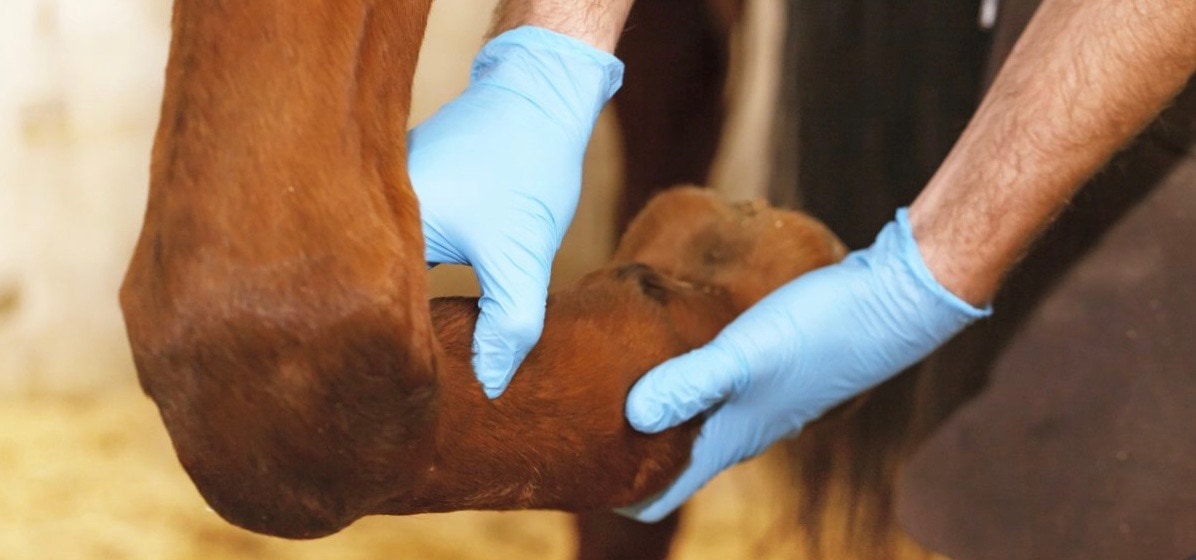Can you tell if your horse is lame?

Lameness is something every horse owner dreads. But can you tell if your horse is uneven? Petplan Equine Veterinary expert Gil Riley MRCVS offers advice on spotting when your horse is lame. H&C has lots of advice on horse health and welfare in Vet Essentials. From laminitis to colic, and tendon injuries to worming, we’ve got all the tips you need to keep your horse in top condition.
Here’s some more information on lameness:
Change in behaviour
In some circumstances lameness will come on suddenly and profoundly, such as a punctured sole or a kick wound. However, lameness often develops gradually, which can make it difficult for an owner to identify.
Subtle changes in your horse’s demeanour and behaviour while being ridden can be an important indicator that the horse is in pain and showing signs of lameness.
The first signs of lameness are many and varied. Sometimes the horse can have increased head movement when working, which demonstrates he is in discomfort.
Signs of lameness
Other signs of lameness are:
* Moving noticeably better on one rein than another.
* Diverting his head towards the outside of the circle when lunged.
* A loss of impulsion is often the first sign of hind limb lameness, as is a tendency to avoid the correct canter lead.
* The horse may feel different on one trotting diagonal, which indicates he is unlevel.
* Difficulty holding a straight line on approach to a fence.
* Knocking down showjumps and/or chipping in an extra stride on take off.
* Always landing on one particular canter lead.
* Uneven wear of his shoes.
* Dragging one or both toes of the hind limbs.
* Resistance to working round in a shape.
* Sore back and resistance on being mounted (cold backed). This is often thought to be a back problem, but frequently the back pain is due to compensatory changes as a result of lameness.
Calling the vet
It is important to remember any lameness is the result of pain, so seeking prompt veterinary attention is strongly recommended. You can help your vet enormously by providing an accurate history of the problem
The vet’s assessment starts with a stationary examination to locate any sore spots that may help explain the lameness. They will then observe your horse in hand – in walk and then trot – on a hard flat surface.
Lunging on both reins is next, first on a soft surface and then on a hard. This introduces turning into the horse’s movement, which can exacerbate the source of pain and render the lameness more obvious. A foot-based lameness tends to be more exaggerated on a hard surface, whereas a lameness as a result of ligament strain tend to be more obvious when lunged on a soft surface.
Finally, your vet may ask to see your horse ridden. This is especially helpful for bilateral lameness (ie involving both fore limbs or both hind limbs) and for those that are the result of primary back pain.
What next?
Following these examinations your vet will either have a good idea of what’s causing the lameness, and will suggest a treatment plan, or they may need to use other diagnostic tools, such as X-ray or MRI scan.
For more information about lameness visit Petplanequine.co.uk/lameness
In addition to being able to spot lameness early it’s also important to consider how you would cover the cost of any unexpected veterinary treatment that arises. Visit Petplanequine.co.uk to find out more.
This article was provided by Petplan Equine.
You can get more great advice on how to keep your horse healthy and happy on Horse & Country. Watch Vet Essentials, Hermione Gayton: Equine Physio and much more.
Horse & Country is available on iOS and Android apps. You can also find us on Amazon Video, Roku, Fire TV, Apple TV, Android TV, Sky 184 and Virgin TV 298.






